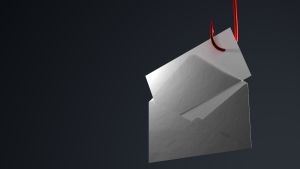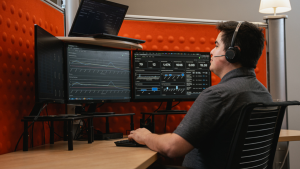What Does Windows End of Life Mean to my Business?
You’ve all heard the panic. Windows is cutting off support for its widely popular version 7 software. January 14, 2020 will officially mark Windows 7 End of Life (EoL). Many companies have used Windows 7 since it launched in 2009 and are still actively using it today. So, what’s the big deal? Can you just stick with Windows 7 or will your computer self-destruct?
What Happens after Windows 7 End of Life
The good news is that your computers will work just fine after the End of Life date. However, just because your computer will function doesn’t mean it’s wise to hold onto outdated software. The largest concern for Windows 7 users is security. Since updates and support will no longer be available, your device will be extremely vulnerable to cyber threats. In fact, this is a bit of a hacker’s dream. They are standing by, knowing people will neglect to update their operating system. Staying informed about the risks and necessary precautions is critical in protecting your business from cyber threats.
The Current Status of Windows 7 Support
Windows 7 is actually already in its ‘extended support’ phase and has been since 2015! Microsoft ended mainstream support including new features and warranty claims. Yet, throughout this time, Windows has kept virus patches and security bug fixes up to date. With End of Life, that will go away. IT and security experts alike strongly suggest migrating your operating system to something current before the Windows EOL date. Theoretically, you could pay for Windows 7 extended support on each individual device, but the costs will build up faster than simply migrating. Not only that, but specific security and bug fixes will also be more expensive and charged on an individual basis.
The Security Risks of Staying on Windows 7
Security patches will no longer be released, leaving systems defenseless against new vulnerabilities that hackers will undoubtedly exploit. Theoretically, you could pay for Windows 7 extended support on each individual device, but the costs will build up faster than simply migrating. Not only that, but specific security and bug fixes will also be more expensive and charged on an individual basis.
Migration Options for Your Business
Currently, there are a few options to choose from when it comes to Windows 7 EOL.
- Windows 8: Not recommended, as it will soon face its own End of Life.
- Windows 10 (Recommended): The most seamless transition and officially supported by Microsoft.
- Linux: A free alternative for those comfortable with open-source operating systems.
- Mac: A switch to Apple’s ecosystem, though costly and may require repurchasing business applications.
Working with Your IT Team for a Smooth Transition
It’s important to begin working with your IT Company, such as Magnitech on this migration as soon as possible. They’ll take a look at the devices you are using, determine how many are utilizing Windows 7, and ensure your hardware isn’t out of date.
Not all computers will be able to handle a new operating system, which could make a migration take much longer, more difficult, and costlier as you upgrade hardware. Your IT company will provide a recommended path for an upgrade with a clear budget and timeline for completion. They may also suggest upgrades or replacements for devices that are too outdated to run a new OS efficiently.
Software Compatibility Considerations
Another critical factor to consider is software compatibility. Many legacy applications may not function properly on newer operating systems. Ensuring that your business applications are compatible with your new system is crucial for a smooth transition. Your IT provider can assist in identifying alternative solutions or updates that will allow your business to operate without disruption.
Strengthening Your IT Security Strategy
Beyond just upgrading your operating system, this is an excellent time to evaluate your overall IT security strategy. Cyber threats are continuously advancing, and having an unsupported operating system increases your exposure to data breaches and malware attacks.
By planning your migration properly and staying informed about cybersecurity best practices, you can reduce risks and protect sensitive business data. Implementing additional security measures such as firewalls, antivirus software, and two-factor authentication will further strengthen your defenses.
Considering Cloud-Based Solutions
Migrating to a cloud-based solution might be a viable option for your business. Many companies are moving towards cloud-based infrastructures that provide automatic security patches and updates, eliminating the need for manual installations. Solutions such as Microsoft 365 offer enhanced security features while providing the flexibility needed for modern business operations.
Plan Your Migration Now
Overall, take some time to plan your transition carefully. Don’t wait until the last minute to make a change, as rushed migrations often lead to errors and unforeseen complications.
Talk to us if you need additional help or options. We can help assess your current IT infrastructure and recommend the best course of action for a seamless migration. Most of all though, get moving now. EOL will be here in no time, and the sooner you prepare, the better positioned your business will be to handle the change efficiently.
Contact Page Form
"*" indicates required fields






